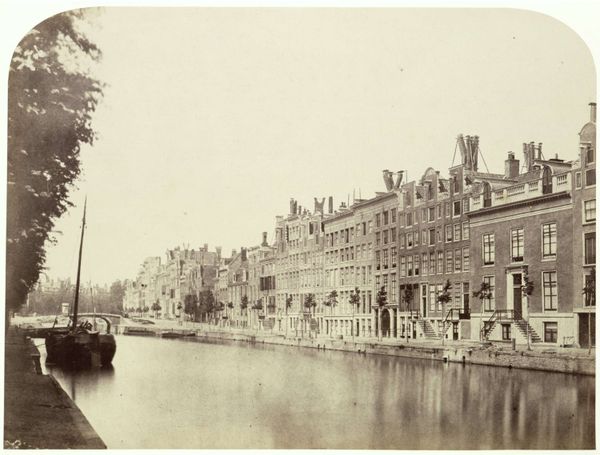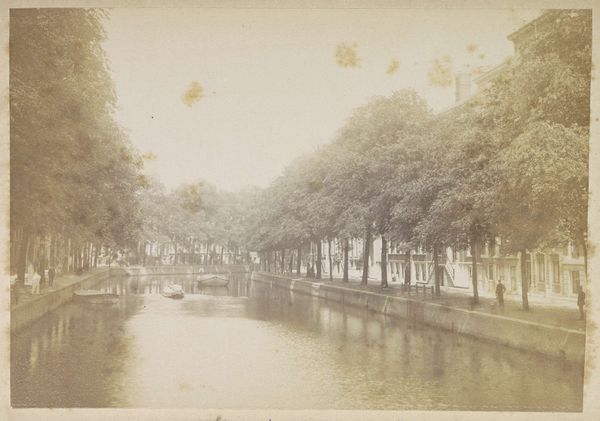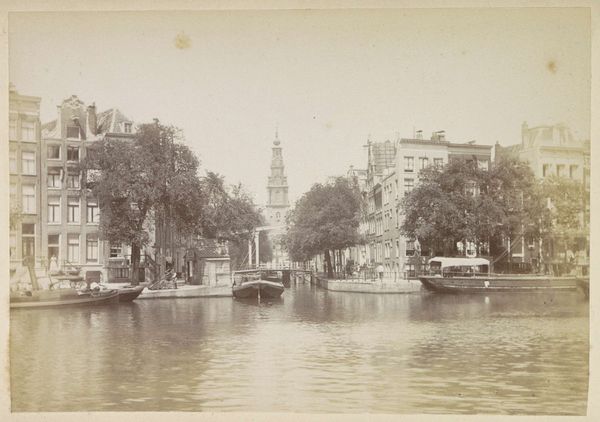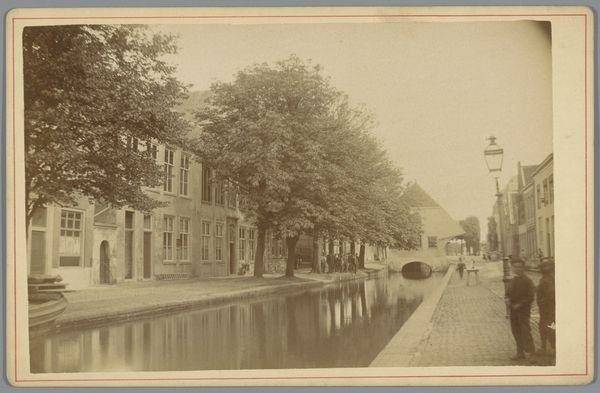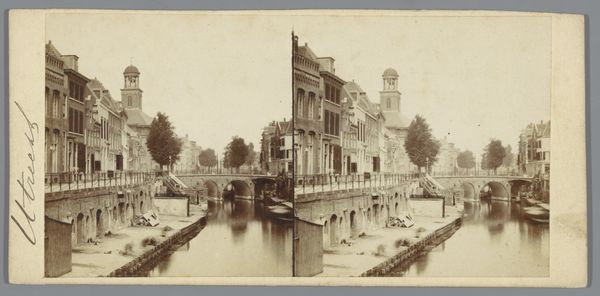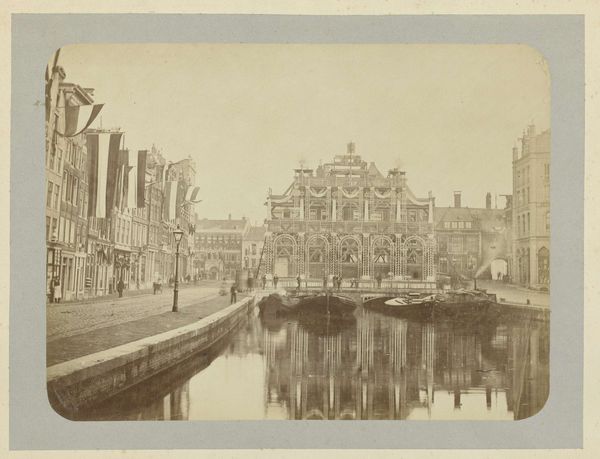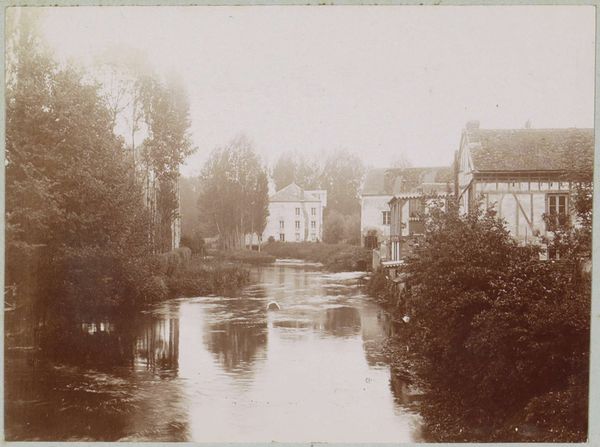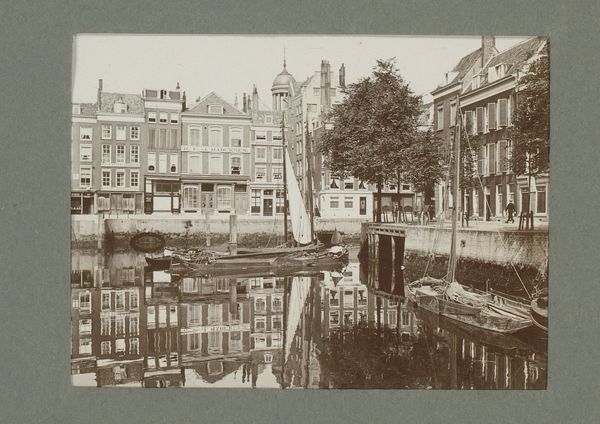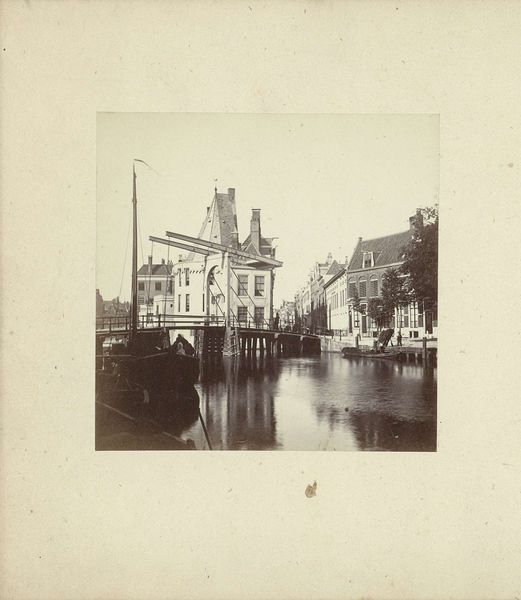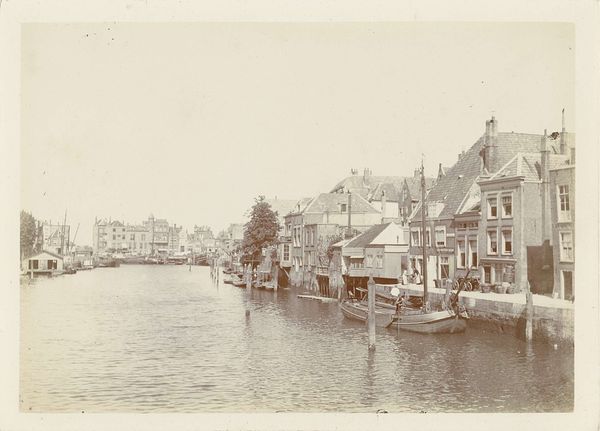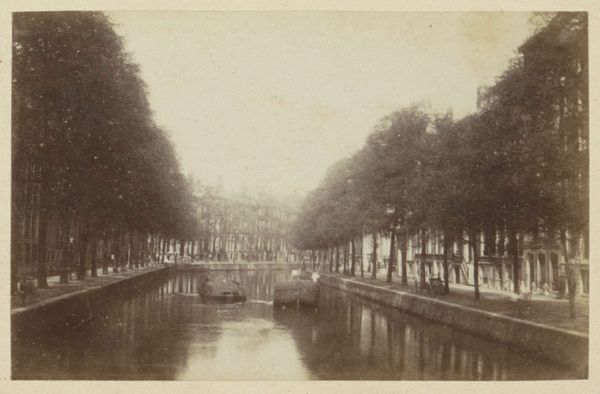
Dimensions: height 70 mm, width 82 mm
Copyright: Rijks Museum: Open Domain
Editor: This photograph, titled "Kasteel van Chambord met links een brug over de Cosson," taken in 1904 by Delizy, presents a striking view of the castle and its surroundings. I'm struck by the stillness of the water and how the sepia tone lends a dreamlike quality to the whole scene. What catches your eye when you look at it? Curator: The enduring appeal of Chambord resides, perhaps, in its symbolic embodiment of French Renaissance ambition intertwined with historical memory. The bridge and the Cosson river act as liminal spaces, entryways to a powerful symbolic structure. Do you notice how the water, acting as a mirror, creates a doubled image? Editor: Yes, it almost feels like the castle is both anchored in reality and floating in a dream. I guess that ties into the romantic quality you mentioned. Curator: Indeed. And beyond Romanticism, the photographic process itself holds cultural significance. Sepia tones often evoke nostalgia, reminding us of past eras, and how we like to remember. What do you make of its use here? Editor: It definitely contributes to a sense of timelessness. The castle becomes less a specific place and more a symbol of history itself. So much cultural weight rests on an image like this! Curator: Precisely. And images, as we both know, become imbued with layer upon layer of meaning over time, connecting us to collective histories and shared human experiences. Editor: It's fascinating to consider how a single photograph can hold so much. It really puts into perspective the importance of understanding the historical context of these images. Curator: It's a journey through time and culture, reflected in light and shadow. Photography as palimpsest.
Comments
No comments
Be the first to comment and join the conversation on the ultimate creative platform.
